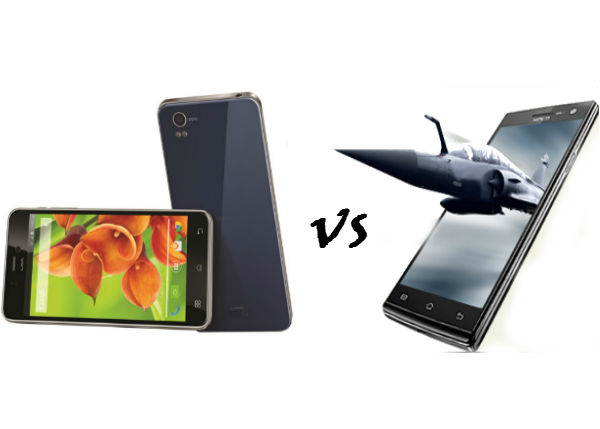Display and Processor
Both the devices are quite average, but the Xolo Q1010i seems to be slightly better than its opponent as it includes a 5 inch IPS LCD display with OGS and boasts HD resolution of 1280×720 pixels. On the other hand, the Lava offering comes fitted with a smaller 4.7 inch IPS LCD display with OGS, but houses a lower qHD resolution of 960×540 pixels. Besides this difference, the Iris Pro 20 has a scratch resistant Corning Gorilla Glass 2 protection while the Xolo phone features Dragon Trail Glass, which is again a scratch resistant glass protection. The Xolo Q1010i is equipped with a 1.3 GHz MediaTek MT6582 quad-core processor and Mali 400 MP2 GPU. On the other hand, the Lava smartphone includes a quad-core processor clocked at a slightly slower speed of 1.2 GHz. Both the processors are decent enough with 1 GB of RAM that can deliver superior levels of multi-tasking for decent performance.
Camera and Internal Storage
Both the handsets come with an 8 MP camera at the rear, but the Xolo offering is superior with a wide aperture of f2.0 that is responsible in capturing more light. This in turn delivers improved low light performance that is appreciable. Also, this camera is fitted with 5 element lens to suppress optical aberrations. This 8 MP primary camera is accompanied with a 2 MP front-facer enabling users to make video calls. In comparison, the Lava Iris Pro 20 packs an 8 MP camera clubbed with BSI sensor and Zero Shutter Lag (ZSL) that offers support for additional modes such as Panorama and HDR. Again, on the storage front the Xolo Q1010i is better with 8 GB of internal memory capacity, while the Iris Pro 20 is still stuck with 4 GB of onboard storage. However, both the phones support expandable storage up to 32 GB for users to store their content.
Battery and Other Features
Delivering life to the Xolo Q1010i is a 2,250 mAh battery that is capable of providing up to 9.7 hours of talk time, which is pretty impressive. On the other hand, the Iris Pro 20 includes a 2,000 mAh battery that can deliver up to 7.5 hours of talk time, but this battery has the CABC (Content Adaptive Backlight Control) power saving technology providing up to 30% additional life. On the software front, both the smartphones are fueled with Android 4.2 Jelly Bean and have connectivity features such as 3G, Wi-Fi, Bluetooth, micro USB and dual SIM functionality hence we do not have any complaints on either.
Key Specs
Price and Conclusion
Both the Xolo Q1010i and Lava Iris Pro 20 are mid-range smartphones with pretty decent specifications and similar price bracket. But, the Xolo smartphone priced relatively lesser is better in terms of specifications as it comes with a HD display, faster processor, increased internal storage capacity for those who do not like 4 GB of storage and better battery life. However, the Iris Pro 20 is also a decent smartphone and users with only a few differences.
